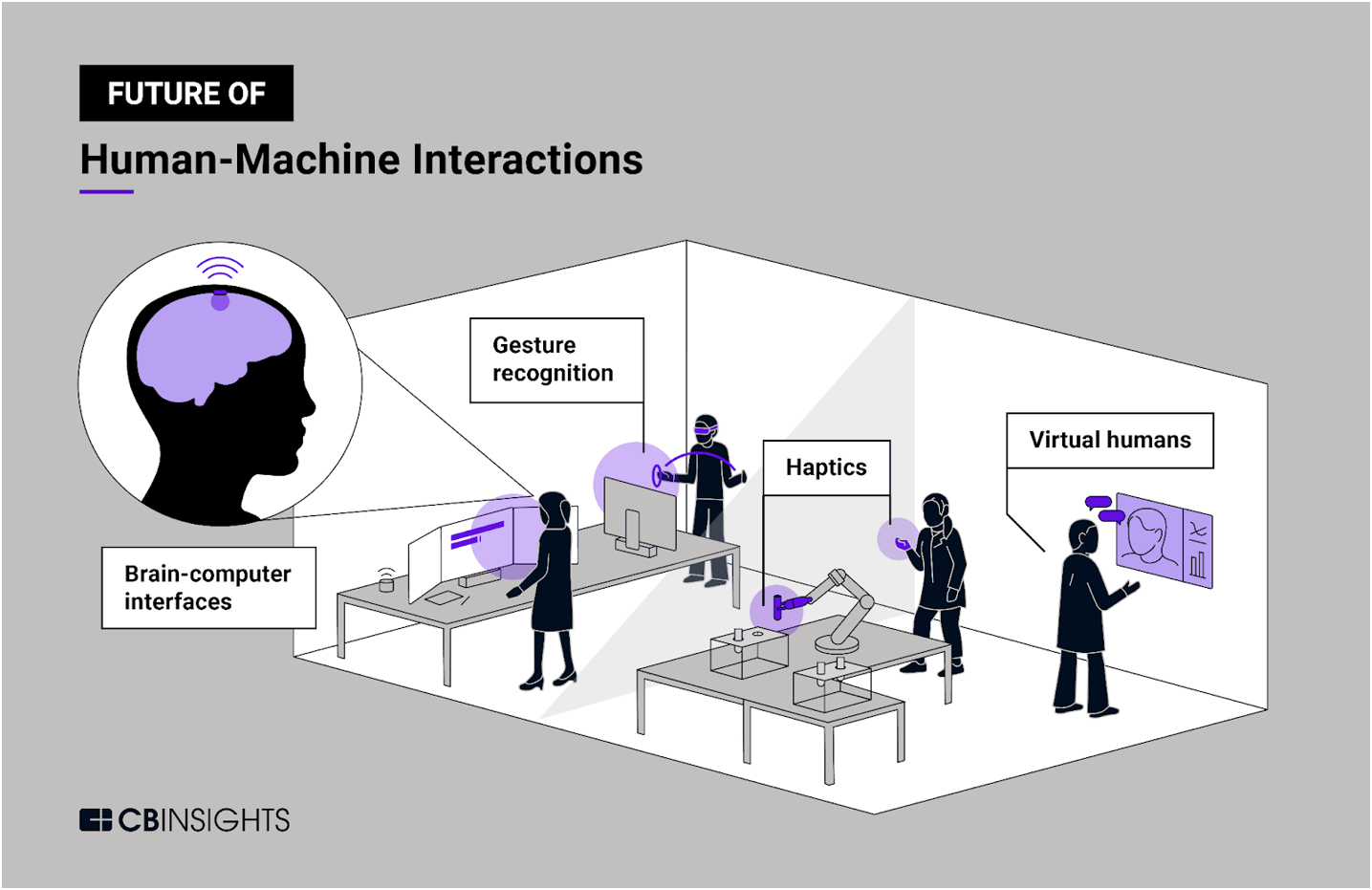Unlocking the Next Frontier: Exploring the Future of Human-Computer Interaction

Welcome to the exciting world of human-computer interaction (HCI), where technology and innovation are converging to revolutionize the way we interact with machines. From voice assistants to brain-computer interfaces, the possibilities are endless, and the future is looking brighter than ever. In this article, we’ll embark on a journey to explore the latest trends, innovations, and predictions in HCI, and discover the opportunities and challenges that lie ahead.
The Evolution of Human-Computer Interaction
Human-computer interaction has come a long way since its inception in the 1960s. From the early days of command-line interfaces to the modern UI/UX design of today, the industry has undergone significant transformations, driven by advances in technology, user expectations, and the need for accessible and intuitive interfaces. As we continue to push the boundaries of what’s possible, we’re witnessing the emergence of innovative interfaces that blur the lines between humans and machines.
The Rise of Touchscreens and Multitouch
The introduction of touchscreens and multitouch technology has revolutionized the way we interact with computers and mobile devices. Gestures, such as swiping, tapping, and pinching, have become an integral part of our daily lives, making it easier to navigate digital content and access information on the go. The latest advancements in gesture recognition, gesture-based interfaces, and augmented reality (AR) are poised to take this experience to new heights.
Voice Assistants and Natural Language Processing
Voice assistants, like Siri, Google Assistant, and Alexa, have changed the face of HCI, making it possible to interact with machines using natural language. Natural Language Processing (NLP) has enabled machines to understand human speech, recognize intent, and respond accordingly. As voice assistants continue to improve, we’re seeing the emergence of multimodal interfaces that combine voice, text, and gestures to deliver a more comprehensive user experience.
The Future of Voice Assistants
Researchers are exploring ways to take voice assistants to the next level, leveraging advancements in AI, machine learning, and computer vision. We’re seeing the development of more sophisticated voice recognition systems, voice-based interfaces for inaccessible devices, and even voice-controlled devices for people with disabilities.
Brain-Computer Interfaces and Neuro HCI
Brain-Computer Interfaces (BCIs) are enabling people to interact with machines using their thoughts. Neuro HCI is an emerging field that focuses on developing interfaces that read brain signals, allowing individuals to control devices with their minds. While still in its infancy, BCI technology holds tremendous potential for people with paralysis, ALS, and other motor disorders.
The Future of Brain-Computer Interfaces
Researchers are working on developing more advanced BCIs that can read brain signals with higher accuracy, enabling more natural and intuitive interactions. The long-term goal is to create seamless interfaces that can read brain signals in real-time, providing individuals with new ways to communicate and interact with the world around them.
Augmented Reality and Virtual Reality
Augmented Reality (AR) and Virtual Reality (VR) are revolutionizing the way we experience digital content. These technologies are enabling immersive interactions that blur the lines between the physical and digital worlds, opening up new possibilities for education, entertainment, and social interaction.
The Future of AR and VR
The latest advancements in AR and VR technology are pushing the boundaries of immersion, accessibility, and usability. We’re seeing the emergence of more sophisticated AR experiences, standalone VR headsets, and the integration of CI and VR with other technologies like AI and IoT.
The Role of Artificial Intelligence in HCI
Artificial Intelligence (AI) is transforming HCI, enabling machines to learn from user behavior, adapt to individual preferences, and deliver personalized experiences. AI-powered chatbots, virtual assistants, and conversational UIs are changing the way we interact with machines, making it easier to access information, complete tasks, and solve problems.
The Future of AI in HCI

Researchers are working on developing more sophisticated AI models that can understand user intent, recognize emotional states, and deliver more human-like interactions. The long-term goal is to create AI-powered interfaces that can learn from users, adapt to new situations, and provide seamless, intuitive experiences.
Accessibility and Inclusion in HCI
Accessibility has long been a critical aspect of HCI, with designers and developers working to create interfaces that are inclusive, intuitive, and accessible to people of all abilities. The latest advancements in inclusive design, universal design principles, and accessible technology are paving the way for a more inclusive HCI landscape.
The Future of Accessibility in HCI
Researchers are exploring new ways to make technology more accessible, leveraging advancements in machine learning, computer vision, and other technologies. We’re seeing the emergence of more sophisticated accessibility tools, accessible interfaces for people with disabilities, and the development of AI-powered accessibility solutions.
The Future of HCI: Challenges and Opportunities
As we continue to push the boundaries of human-computer interaction, we’re facing new challenges and opportunities. The future of HCI is full of possibilities, from brain-computer interfaces to AI-powered interfaces that can learn from users. However, we also need to address the challenges of accessibility, inclusion, and usability, ensuring that technology is available to everyone, regardless of their ability or background.
What’s Next in HCI?
The future of HCI is exciting and complex, with new technologies, innovations, and predictions emerging on the horizon. As we continue to explore the possibilities of HCI, we’re promising to address the challenges of accessibility, inclusion, and usability. In this article, we’ve explored the latest trends, innovations, and predictions in HCI, and discovered the opportunities and challenges that lie ahead.
Call to Action
We’d love to hear from you! Share your thoughts on the future of human-computer interaction in the comments section below. How do you think HCI will change in the next 5-10 years? What new technologies or innovations are you most excited about? Let’s start a conversation about the future of HCI!
Are you ready to unlock the next frontier of human-computer interaction? Share this article with your friends and colleagues to spark a conversation about the future of HCI. Join the discussion and help shape the future of technology!


